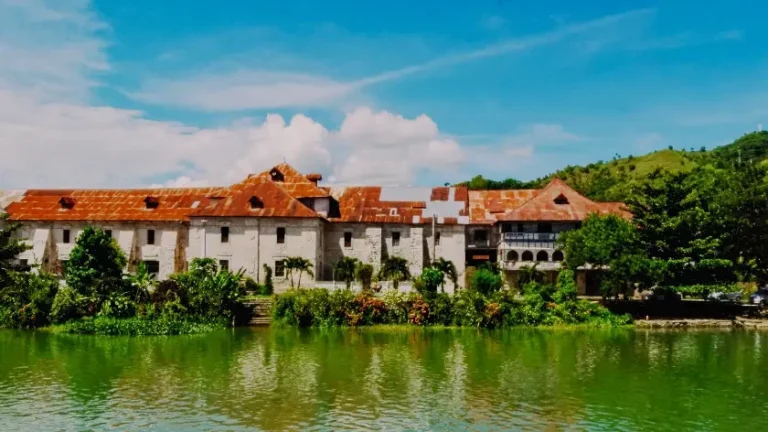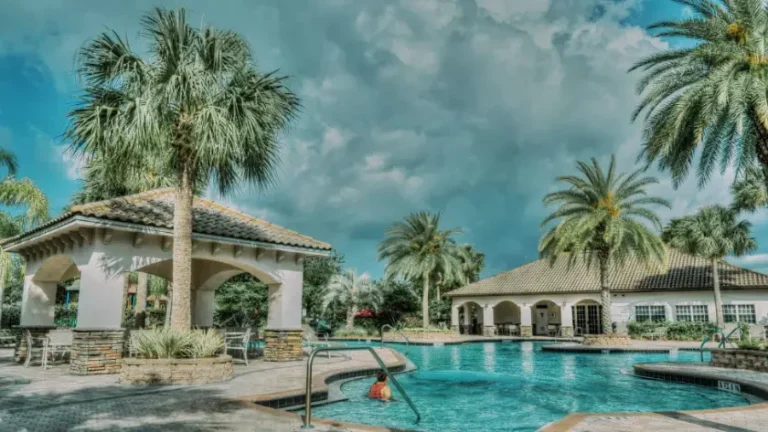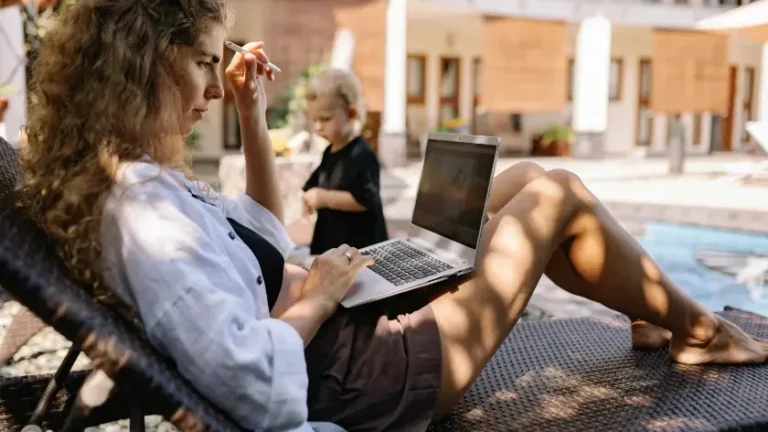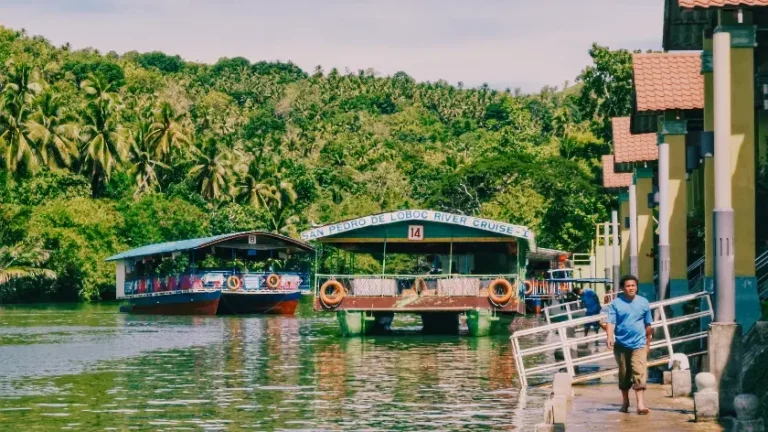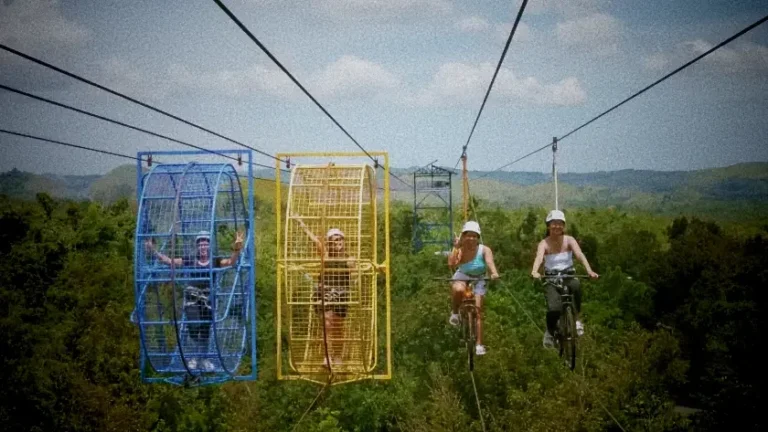Things to Do in Cebu in August 2025: Hot Monsoon Breaks & Late Wet Season
August in Cebu delivers a unique tropical experience: scorching hot and humid conditions punctuated by intense monsoon downpours. This month combines the worst of both seasons – blistering heat when it’s not raining and torrential storms when weather systems move through. Yet for those who master August’s rhythms, it offers incredible adventures during weather breaks, authentic local experiences, and some of the year’s most dramatic natural displays.
All Bohol and Cebu Tours & Excursions in 2025
- 👉 Secure your Bohol adventure before spots sell out” — trusted by 50K+ travelers with instant confirmation
- 👉 Swim with whale sharks tomorrow”” — last-minute Cebu packages with guaranteed availability
- 👉 Why choose when you can have both?” — Bohol + Cebu packages from ₱5,999
- “Book now, decide later with free cancellation”
Why August is Cebu’s Most Challenging Yet Rewarding Month
Extreme Weather Combinations August tests travelers with both intense tropical heat (when dry) and powerful monsoon storms, creating the year’s most demanding but character-building weather conditions.
Weather Window Adventures Brief clear periods between storm systems create precious opportunities for outdoor activities with dramatically enhanced appreciation for good weather.
Continued Budget Benefits Tourist numbers remain minimal, maintaining excellent value and authentic local experiences while weather gradually begins improving toward month’s end.
Late Monsoon Drama August storms often display peak intensity with spectacular lightning, but systems typically move through faster than June-July patterns.
Weather in Cebu in August
- Temperature: 26-33°C (79-91°F) – Hot and muggy between storms
- Rainfall: Heavy but variable (12-18 rainy days with intense but shorter duration storms)
- Humidity: Extreme (90-95%) – Oppressive when not raining
- Heat Index: Often exceeds 40°C (104°F) during clear periods
- Storm patterns: Faster-moving systems with intense but briefer downpours
- Weather windows: 2-4 day clear periods between storm systems
- Sunrise: Around 5:55 AM
- Sunset: Around 6:20 PM
What to Pack:
- Cooling gear (portable fans, cooling towels, ice packs)
- Maximum sun protection for intense UV during clear periods
- Complete waterproof rain gear for sudden intense storms
- Electrolyte supplements for extreme heat and humidity
- Multiple changes of lightweight, quick-dry clothing
- Powerful dehumidifiers for electronics and clothing
- Cooling menthol products for heat relief
- Emergency cooling supplies (instant cold packs)
Top Things to Do in Cebu in August
Weather Window Maximization
1. Storm-to-Storm Island Hopping Plan intensive 2-3 day island adventures during clear weather windows between storm systems. The appreciation for sunshine after storms makes these experiences incredibly precious.
2. Sunrise-to-Sunset Beach Days During clear periods, maximize every hour of good weather with all-day beach experiences, knowing the next storm system could arrive within days.
3. Multi-Day Diving Expeditions When weather clears, book consecutive diving days to take advantage of calm conditions that may not return for a week or more.
4. Speed Tourism Challenges Attempt to see maximum attractions during brief weather windows. The urgency creates intense, memorable experiences of major sites.
Heat and Humidity Adaptation Activities
5. Dawn and Dusk Adventures Only Restrict outdoor activities to 5:30-7:30 AM and 5:30-7:30 PM when heat becomes tolerable. Learn to compress full-day activities into 4-hour windows.
6. Extreme Cooling Water Activities Seek the coldest water available: mountain springs, deep pools, air-conditioned swimming pools. Every degree of cooling becomes precious relief.
7. Underground and Cave Exploration Discover Cebu’s caves and underground areas where temperatures remain naturally cool. Cave exploration becomes essential relief from surface heat.
8. Ice House and Cold Storage Tours Visit industrial cooling facilities, ice plants, and cold storage areas. Appreciate modern cooling technology during extreme tropical conditions.
Storm System Tracking and Watching
9. Professional Weather Monitoring Learn to track storm systems using local weather resources. Understanding weather patterns becomes essential for planning any outdoor activities.
10. Storm Photography Between Systems Capture dramatic post-storm and pre-storm atmospheric conditions. August often provides spectacular cloud formations and lighting during weather transitions.
11. Flood Pattern Documentation Observe and photograph how communities manage seasonal flooding. August floods often demonstrate peak community adaptation strategies.
12. Lightning Photography Mastery Perfect storm photography techniques during August’s intense electrical displays. Frequent storms provide multiple practice opportunities.
Maximum Air Conditioning Cultural Experiences
13. Extended Shopping Mall Immersion Spend entire days in air-conditioned shopping complexes, treating them as cultural centers rather than just retail spaces. Discover Filipino mall culture.
14. Movie Theater Cultural Marathons Experience Filipino cinema culture during extended air-conditioned movie sessions. Multiple films become necessary heat relief strategy.
15. Museum and Gallery Deep Dives Dedicate full days to climate-controlled cultural institutions. August makes indoor cultural exploration feel essential rather than optional.
16. Spa and Wellness Sanctuary Days Book all-day spa packages combining cooling treatments with air-conditioned relaxation. Heat makes wellness treatments feel medically necessary.
Community Heat Adaptation Learning
17. Local Cooling Technique Education Learn traditional Filipino methods for staying cool: proper clothing, cooling foods, architectural adaptations, and behavioral modifications.
18. Siesta Culture Participation Adopt local midday rest patterns. Experience authentic Filipino heat management through traditional afternoon rest periods.
19. Night Market Heat Escape Participate in night markets and evening social activities when temperatures finally drop to tolerable levels after sunset.
All Bohol and Cebu Tours & Excursions in 2025
- 👉 Secure your Bohol adventure before spots sell out” — trusted by 50K+ travelers with instant confirmation
- 👉 Swim with whale sharks tomorrow”” — last-minute Cebu packages with guaranteed availability
- 👉 Why choose when you can have both?” — Bohol + Cebu packages from ₱5,999
- “Book now, decide later with free cancellation”
August Weather Pattern Survival Guide
Early Morning (5:30-8:00 AM) – Golden Window
- Coolest temperatures of the day
- Often clear skies before daily weather development
- Essential outdoor activity time before heat becomes dangerous
- Maximum productivity window for physical activities
Morning to Afternoon (8:00 AM-4:00 PM) – Survival Mode
- Dangerous heat levels requiring indoor retreat
- Potential storm development during afternoon hours
- Air conditioning essential for comfort and safety
- Minimal outdoor exposure recommended
Late Afternoon/Evening (4:00-8:00 PM) – Weather Variable
- Storm activity possible but often brief
- Heat remains intense until after sunset
- Weather monitoring essential for planning
- Indoor backup plans necessary
Night (8:00 PM-5:30 AM) – Relative Relief
- Temperatures drop to tolerable levels
- Social activities resume in outdoor settings
- Clear nights often spectacular after storms
- Planning time for next day’s weather window activities
Extreme Heat Accommodation Strategy
Industrial-Strength Air Conditioning: Choose properties with powerful, reliable cooling systems capable of combating extreme heat and humidity combinations.
Backup Power Systems: Reliable generators become essential during power outages that frequently occur during storms or peak heat demand.
Pool and Water Feature Priority: Swimming pools and water features transform from amenities to survival necessities during August’s extreme conditions.
Best Heat-Combat Accommodations:
Maximum Cooling Luxury:
- Shangri-La Mactan: Superior cooling systems with ocean breezes
- Crimson Resort: Multiple cooling zones and water features
- Marco Polo Plaza: High-altitude location with industrial AC systems
Heat-Smart Mid-Range:
- Quest Hotel: Central location with powerful climate control
- Waterfront Hotel: Multiple cooling areas and backup systems
- Plantation Bay: Extensive water features for cooling relief
Budget Heat Survival:
- Z Hostel: Modern AC systems and common cooling areas
- Mad Monkey Hostel: Social spaces with reliable cooling systems
August Heat and Storm Food Strategy
Extreme Cooling Foods:
- Ice-based desserts: Halo-halo, ice candy, and frozen treats become essential
- Cold soups: Chilled fruit soups and cold noodle dishes
- Frozen fruits: Ice-cold tropical fruits for cooling and hydration
- Coconut water: Fresh buko juice for natural cooling and electrolytes
- Shaved ice drinks: Cooling beverages with ice as primary ingredient
Storm Day Comfort Foods:
- Hot soup during cool storms: Warming foods when temperatures drop during rain
- Preserved foods: Shelf-stable options during power outages
- Simple preparations: Foods requiring minimal cooking heat
- Hydrating foods: Water-rich fruits and vegetables
Heat Management Nutrition:
- Electrolyte replacement: Sports drinks and natural coconut water
- Light proteins: Easy-to-digest options that don’t increase body heat
- Cooling spices: Traditional Filipino ingredients that provide internal cooling
- Minimal cooking: Raw and cold-prepared foods to avoid kitchen heat
Health and Safety During Extreme Conditions
Heat Stroke Prevention:
- Never underestimate August heat – it can be life-threatening
- Recognize early warning signs: Dizziness, nausea, confusion, excessive sweating cessation
- Seek immediate cooling: Air conditioning, cold water, ice packs
- Monitor vulnerable individuals: Children, elderly, and those with health conditions
Extreme Humidity Management:
- Antifungal prevention: Daily application in high-risk areas
- Clothing rotation: Change clothes 3-4 times daily minimum
- Skin monitoring: Watch for heat rash, fungal infections, and irritation
- Dehydration vigilance: Constant fluid intake even when not feeling thirsty
Storm Safety During Heat Waves:
- Power outage preparation: Backup cooling methods when AC fails
- Flooding safety: Never enter flood waters during extreme heat (increased infection risk)
- Emergency cooling supplies: Ice packs, cooling towels, emergency fans
- Heat emergency planning: Know location of nearest medical facilities
Why August is Cebu’s Ultimate Endurance Test
August in Cebu doesn’t just test your travel skills – it tests your adaptability, patience, and appreciation for basic comforts. This month strips away any romantic notions about tropical paradise and reveals the raw reality of extreme tropical conditions.
The combination of oppressive heat and powerful storms creates a unique appreciation for simple pleasures: the first breath of air conditioning after outdoor exposure, the incredible relief of jumping into cool water, and the profound gratitude felt when storm clouds finally bring temperature relief.
August teaches valuable lessons about human resilience and community support. You’ll discover how locals have adapted to extreme conditions through architecture, clothing, food choices, and daily rhythms developed over generations. The shared experience of surviving difficult weather creates immediate bonds with residents.
The month rewards those who embrace its challenges with some of the most authentic cultural experiences possible. When you’re seeking shade with locals during peak heat, sharing cooling strategies, and celebrating together when temperatures finally drop, you’re participating in genuine Filipino community life.
August also provides incredible weather appreciation training. After experiencing this month’s extremes, you’ll never take comfortable weather for granted again. Every breeze, every cloud, every degree of cooling becomes a source of genuine gratitude.
Come experience Cebu when nature tests human limits – and discover both your own resilience and the incredible adaptability of Filipino culture to extreme tropical conditions!
All Bohol and Cebu Tours & Excursions in 2025
- 👉 Secure your Bohol adventure before spots sell out” — trusted by 50K+ travelers with instant confirmation
- 👉 Swim with whale sharks tomorrow”” — last-minute Cebu packages with guaranteed availability
- 👉 Why choose when you can have both?” — Bohol + Cebu packages from ₱5,999
- “Book now, decide later with free cancellation”
Island Adventures Await: Cebu’s 2025 Calendar
What’s On in Bohol & Cebu: Your Complete Events Calendar
Every month brings magic to Bohol and Cebu, from world-famous street dancing festivals to intimate community celebrations that showcase authentic Filipino culture. With over 2 million visitors annually drawn to these islands’ rich calendar of events, timing your visit right can mean the difference between experiencing a once-in-a-lifetime cultural immersion or fighting crowds for a glimpse of the action.
Things to Do in Cebu in April 2025: Peak Summer Heat & Water Paradise
April in Cebu is summer at its most intense and magnificent. With temperatures soaring to their annual peak and sunshine blazing from cloudless skies, this month transforms the Queen City into the ultimate water paradise. Easter…
Things to Do in Cebu in February 2025: Romance, Diving & Peak Dry Season
February in Cebu is pure paradise. As the post-Sinulog crowds disperse and Valentine’s Day approaches, the Queen City transforms into a romantic tropical haven with the year’s most perfect weather conditions. Crystal-clear seas reach peak visibility…
Things to Do in Cebu in November 2025: Peak Pleasant Weather & High Season Begins
November in Cebu represents the pinnacle of tropical perfection – when ideal weather conditions meet full tourism operations to create the quintessential Philippine paradise experience. As the last traces of monsoon disappear and the dry season…
Things to Do in Cebu in December 2025: Your Complete Holiday Guide
December in Cebu is nothing short of magical. As the rest of the world shivers through winter, the Queen City of the South welcomes visitors with warm tropical breezes, vibrant Christmas celebrations, and perfect weather for…
Things to Do in Cebu in September 2025: Monsoon Retreat & Weather Transition
September in Cebu marks the beginning of hope – when the relentless monsoon finally starts its gradual retreat and glimpses of the coming dry season appear. This transitional month offers the best of both worlds: continued…
Things to Do in Cebu in March 2025: Hot Season Adventures & Shoulder Season Perks
March in Cebu marks the exciting transition into the hot season, bringing blazing sunshine, crystal-clear skies, and the year’s most vibrant energy. As temperatures rise and crowds thin out after peak season, savvy travelers discover March’s…
Things to Do in Cebu in October 2025: Pleasant Weather Returns & Tourism Revival
October in Cebu marks the triumphant return of paradise conditions as the monsoon finally retreats and the beloved dry season begins. This month delivers the perfect balance: reliably pleasant weather with occasional refreshing rain showers, awakening…
Things to Do in Cebu in January 2026: Sinulog Festival & Perfect Weather
January in Cebu is absolutely electrifying. The month kicks off with the world-famous Sinulog Festival, transforming the entire province into a massive celebration of culture, faith, and Filipino heritage. Combined with the continuation of the dry…
Things to Do in Cebu in May 2025: Wet Season Transition & Pre-Monsoon Adventures
May in Cebu brings welcome relief from April’s scorching heat as afternoon thunderstorms begin to cool the air and refresh the landscape. This transitional month offers the perfect balance of tropical warmth and cooling rains, creating…
Things to Do in Cebu in July 2025: Peak Wet Season & Typhoon Adventures
July in Cebu represents the heart of the Southwest Monsoon season, bringing the most intense tropical weather patterns of the year. This is when nature displays its full power through torrential rains, spectacular lightning shows, and…
Things to Do in Cebu in June 2025: Monsoon Season & Rainy Day Adventures
June in Cebu marks the full arrival of the Southwest Monsoon (Habagat), transforming the Queen City into a lush, green paradise punctuated by dramatic daily downpours. While many travelers avoid the wet season, savvy visitors discover…
All Bohol and Cebu Tours & Excursions in 2025
- 👉 Secure your Bohol adventure before spots sell out” — trusted by 50K+ travelers with instant confirmation
- 👉 Swim with whale sharks tomorrow”” — last-minute Cebu packages with guaranteed availability
- 👉 Why choose when you can have both?” — Bohol + Cebu packages from ₱5,999
- “Book now, decide later with free cancellation”


